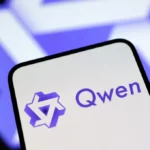In a bold move that underscores its growing influence in the artificial intelligence ecosystem, Microsoft unveiled a transformative vision for the future of the internet at its annual Build developer conference. Dubbed the “agentic web,” this concept reimagines the digital landscape as a space where AI agents communicate and collaborate autonomously—much like how browsers currently interact with servers. The announcement, delivered by Microsoft CTO Kevin Scott, signals a significant shift in how applications will be developed, deployed, and experienced in the coming years.
A New Paradigm: From Static Web to Agentic Web
The traditional web has long been structured around human interaction—users navigating websites, clicking buttons, and manually inputting data. Microsoft’s agentic web proposes a radical departure from this model. In this new paradigm, intelligent agents—powered by advanced AI models—will act on behalf of users, interacting with other agents and systems to perform tasks, retrieve information, and make decisions in real time.
This evolution is not merely theoretical. Microsoft is actively building the infrastructure to support this vision. By integrating AI deeply into its core platforms and services, the company aims to create an open, interoperable environment where agents can seamlessly operate across applications, devices, and networks. This could lead to a future where digital assistants handle everything from scheduling meetings and managing workflows to conducting research and executing transactions—all without direct user intervention.
Live Demonstration of AI Integration
The vision was brought to life during a high-energy keynote presentation by Microsoft CEO Satya Nadella. In a striking demonstration of the company’s commitment to operationalizing AI, Nadella executed a live code deployment using GitHub Copilot Agent, Microsoft’s AI-powered development assistant. This moment was more than just a showcase of technical prowess—it was a clear message that AI is no longer a futuristic concept but a present-day tool embedded in the software development lifecycle.
GitHub Copilot Agent represents a significant leap forward in developer productivity. By understanding natural language prompts and generating context-aware code suggestions, it enables developers to focus on higher-level problem-solving while automating routine coding tasks. The live demo illustrated how such tools are becoming indispensable components of modern software engineering.
Microsoft’s Strategic Position in the AI Ecosystem
While much of the public discourse around AI centers on flashy startups and headline-grabbing breakthroughs, Microsoft has quietly positioned itself as a foundational player in the AI revolution. Its strategic partnership with OpenAI, including a substantial investment and deep integration of OpenAI’s models into Microsoft products, gives the company unparalleled access to cutting-edge AI capabilities.
Moreover, Microsoft’s vast reach—spanning Windows, Azure, Office 365, and enterprise solutions—provides a massive distribution network for AI-powered tools. This allows the company to deploy innovations at scale, reaching hundreds of millions of users across both consumer and business segments. As a result, Microsoft is uniquely equipped to turn theoretical advancements in AI into practical, widely adopted solutions.
Implications for Developers and Enterprises
The agentic web has profound implications for developers, enterprises, and end-users alike. For developers, it introduces a new design philosophy centered around building agents rather than static applications. These agents must be capable of understanding context, making decisions, and collaborating with other agents in dynamic environments.
For enterprises, the shift promises increased efficiency, automation, and scalability. Intelligent agents can streamline operations, reduce manual workloads, and enable more responsive customer service. They also open up new possibilities for innovation, as businesses can leverage AI to create adaptive, personalized experiences for their users.
However, this transformation also raises important questions about security, privacy, and governance. As agents gain more autonomy and access to sensitive data, ensuring their behavior aligns with user intent and regulatory requirements becomes critical. Microsoft has acknowledged these challenges and emphasized its commitment to building responsible AI systems that prioritize transparency, accountability, and user control.
The Road Ahead: Building the Infrastructure for Agentic Interactions
To realize the full potential of the agentic web, Microsoft is investing heavily in the underlying infrastructure. This includes enhancements to Azure’s AI capabilities, new APIs for agent communication, and tools for monitoring and managing agent behavior. The goal is to create a robust ecosystem where agents can operate reliably and securely across diverse contexts.
One key aspect of this infrastructure is interoperability. Microsoft envisions a future where agents from different vendors and platforms can collaborate seamlessly, much like how web standards enable cross-browser compatibility today. Achieving this will require industry-wide cooperation and the development of common protocols and frameworks.
Conclusion: A Quiet Revolution with Far-Reaching Impact
While the Build conference may have had the energy of a tech rave, the announcements made there reflect a deeply strategic and forward-looking approach to AI. Microsoft’s vision for an agentic web is not just a technological shift—it’s a redefinition of how we interact with the digital world. By embedding AI into the very fabric of the internet, Microsoft is laying the groundwork for a future where intelligent agents become our primary interface with technology.
As this vision unfolds, it will reshape industries, redefine roles, and challenge existing paradigms. And while the spotlight often shines on more flamboyant players in the AI space, Microsoft’s methodical, infrastructure-first approach may ultimately prove to be the most transformative of all.









